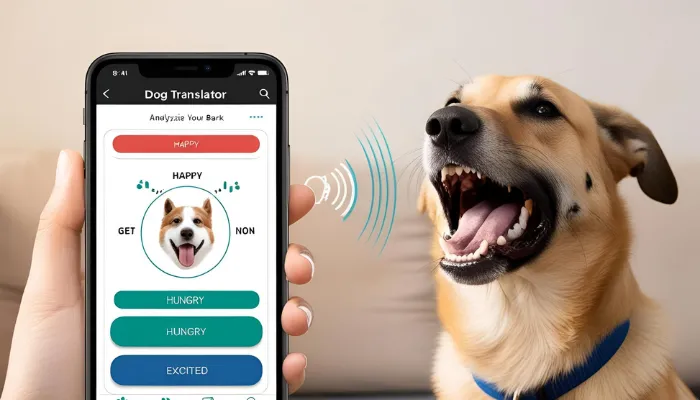How Do You Tell a Dog You’re Sorry? Our furry friends are always loyal and loving to us, but at times, we end up hurting them. It may be that you stepped on their paw, shouted, or were not around when they wanted your company. Understanding how to apologize is very important. Have you ever wondered if a dog translator could help in such situations?
An understanding of a dog’s behavior and communication will enable you to express your apology in the best possible manner. In this article, we will explore different ways a dog can be shown an apology along with regaining their trust.

How Do Dogs Show Their Emotions?
It’s also worth noting how dogs perceive emotions so you can tailor your apology accordingly. Dogs do not have the ability to hold grudges like humans do, but they will respond to your tone of voice, are, and even body language. The following are actions that may indicate a dog’s anger:
- Avoiding eye contact
- Ears pinned back
- Tail between legs
- Hiding or withdrawing
- Whimpering or whining
Recognizing these signs will help you appreciate the general state of feelings of your dog and allow you to know how best to apologize.
Steps to Apologize to Your Dog
How Do You Tell a Dog You’re Sorry? As stated earlier, when it comes to dogs, it is difficult to know the actual motive of something offended them. Therefore, once you come to the conclusion, it’s best if you apologize, readily taking measures is essential. Below is the best way intended for telling a dog you’re double “I’m sorry.”
1. Use a Soothing Voice
Instead of simply saying sorry, use a soft tone, your dog will appreciate it more. Remember that dogs pay a lot of attention to the sound of the vocals more than the words spoken. Your voice should be gentle which indicates to the dog that he is not being threatened.
2. Allow Them to Set the Interactions Pace
Focus interactions with dogs that seem shy instead of that every interruption may result in the aggression inflicted on you in chasing them away. Resetting their boundaries is one important step in the gradual rebuilding of these elements and winning the dog’s trust.
3. Give Loving Touches
If your pet appears willing, offer gentle strokes or an easy rub on the belly. Positive touch is directly associated with love and care. But, you should be careful—do not rush to touch them if they seem unsure still.
4. Encourage Through Rewards
Dogs appreciate snacks, praising, or a favorite chew toy. This helps to relax them, resulting in uplifting happiness, positive moods, and a decrease in anxiety.
5. Have A Good Time Together
Positive forms of self-expression such as playing easily alleviates stress. Decide to partake in their preferred leisure, like fetch, tugging the rope, or going for a light stroll to brighten spirits and show love.
6. Always Remain Relaxed and Cheerful
Canines are very responsive to their owner’s state of mind. If you look nervous or like you’ve done something wrong, they are bound to remain anxious. Instead, smile, act jolly, and constructive.
By following these steps, you can reassure your dog and strengthen the trust between you.
Methods Of Apologizing For Dogs
The table below answers the question, How Do You Tell a Dog You’re Sorry? by showing different methods of apologizing and their effectiveness in reassuring your dog.
| Apology Method | Effectiveness | Explanation |
|---|---|---|
| Soothing Tone | High | Dogs respond well to calm, reassuring voices. |
| Physical Affection | High | Petting releases endorphins and calms the dog. |
| Giving Space | Moderate | Helps dogs who are initially fearful. |
| Positive Reinforcement | High | Treats and praise create positive associations. |
| Playtime | High | Engages dogs in a stress-relieving activity. |
Understanding these apology methods can help you effectively comfort your dog and restore their trust.
Mistakes to Avoid When Apologizing
While going to make amends, try to avoid the following blunders when considering How Do You Tell a Dog You’re Sorry?
- Over-apologizing: Excessive use of the word “sorry” serves no purpose. Dogs are always more responsive to action than words.
- Forcing affection: Forcing scared dogs to cuddle increases anxiety in them.
- Using a harsh tone: It might be unintentional but using a loud voice in front of a already anxious dog may provoke them.
- Ignoring their emotions: Ignoring their reaction may over time worsen the bond that you have with your dog.
By avoiding these common mistakes, you can ensure your apology helps rebuild trust and strengthens your bond with your dog.
How to Rebuild Trust with Your Dog?
Apologizing is only the starting point. In order to strengthen the relationship with your dog, make sure you:
- Schedule daily activities to spend time together.
- Introduce a consistent schedule to give a sense of comfort.
- Implement practices that reward good behavior.
- Prevent encounters that can create fear in the dog in the future.
Showing affection will always strengthen the bond and make your dog feel safe and valued.
Conclusion
How Do You Tell a Dog You’re Sorry? The crown jewel lies in understanding their feelings and reacting with affection, patience, and advocation. Dogs might not understand spoken phrases on a semantic level, but they surely respond to love in action.
Soothing words, hugs, and playtime can swiftly dispel the feelings of hurt while tightening the bond. With these measures on hand the next time you unknowing offend the dog, do not hesitate to say that, you now know how to apologize and win their trust back.
